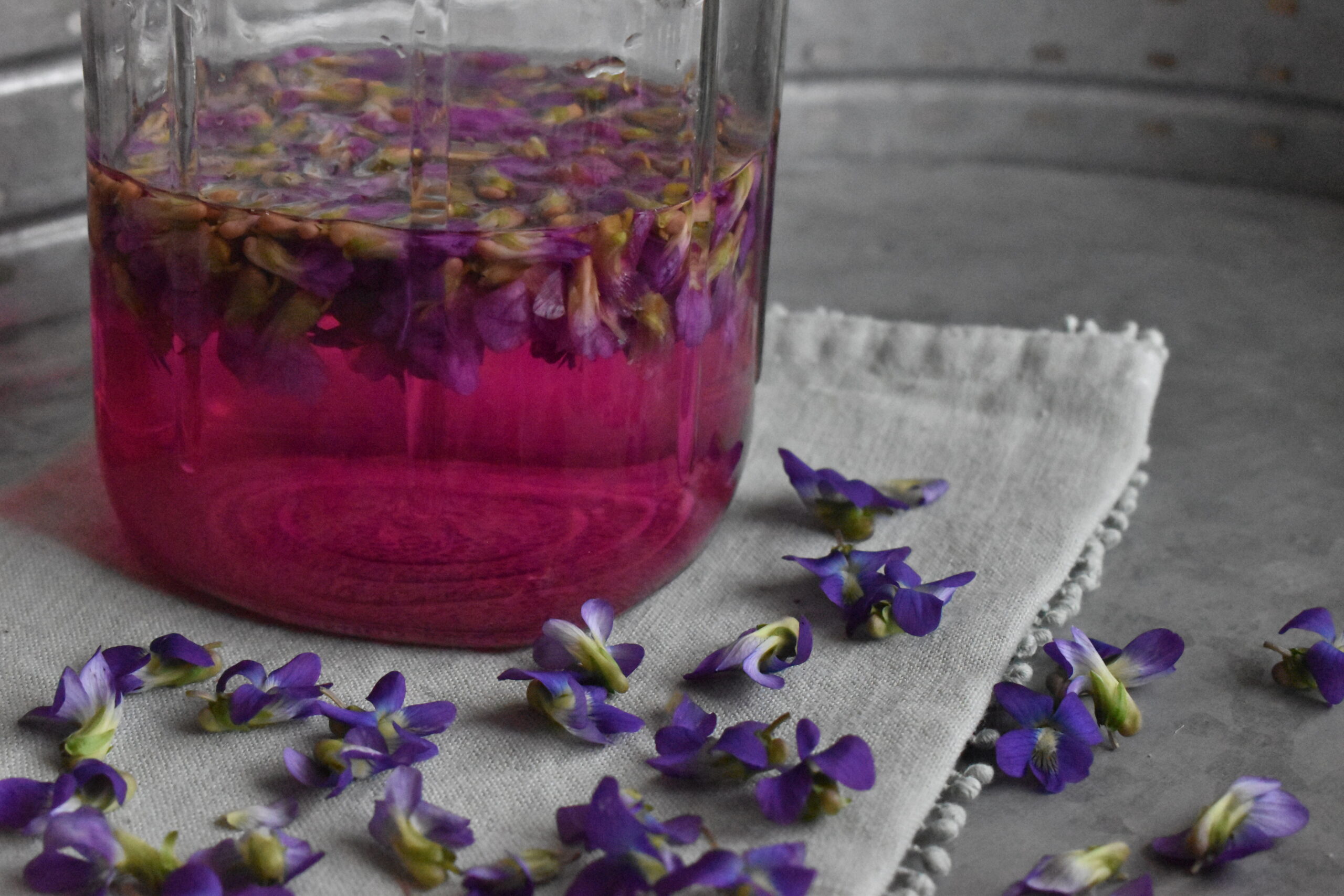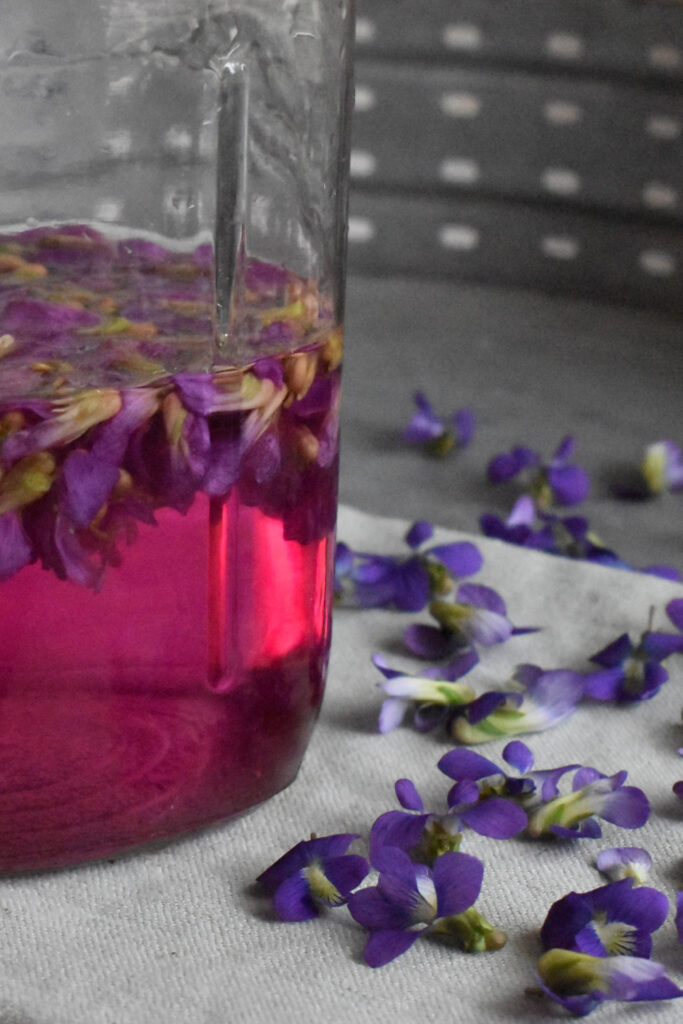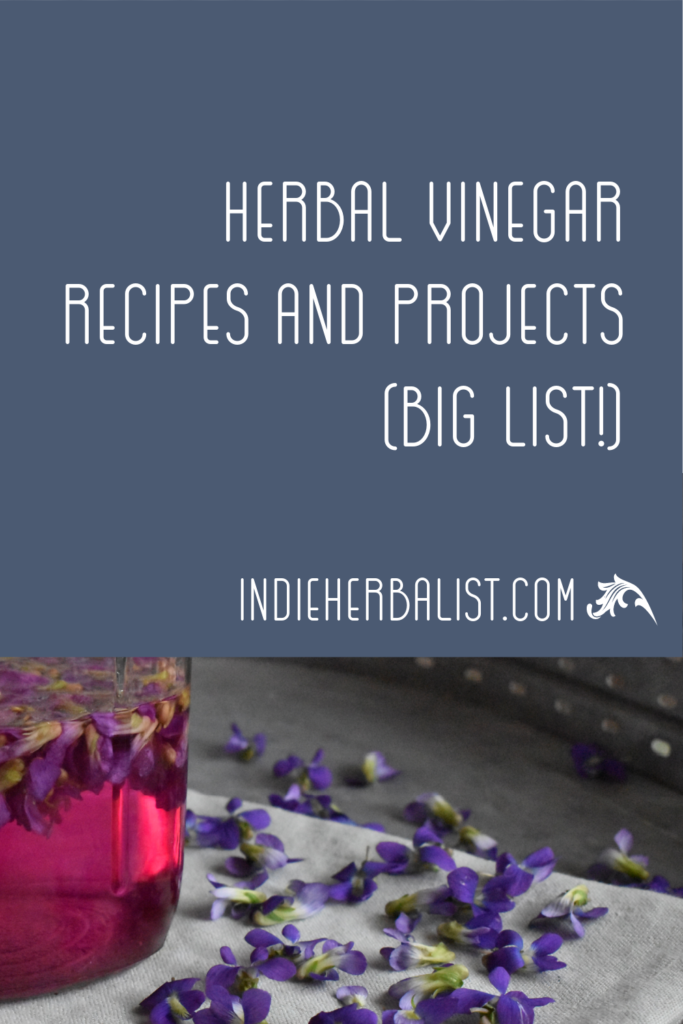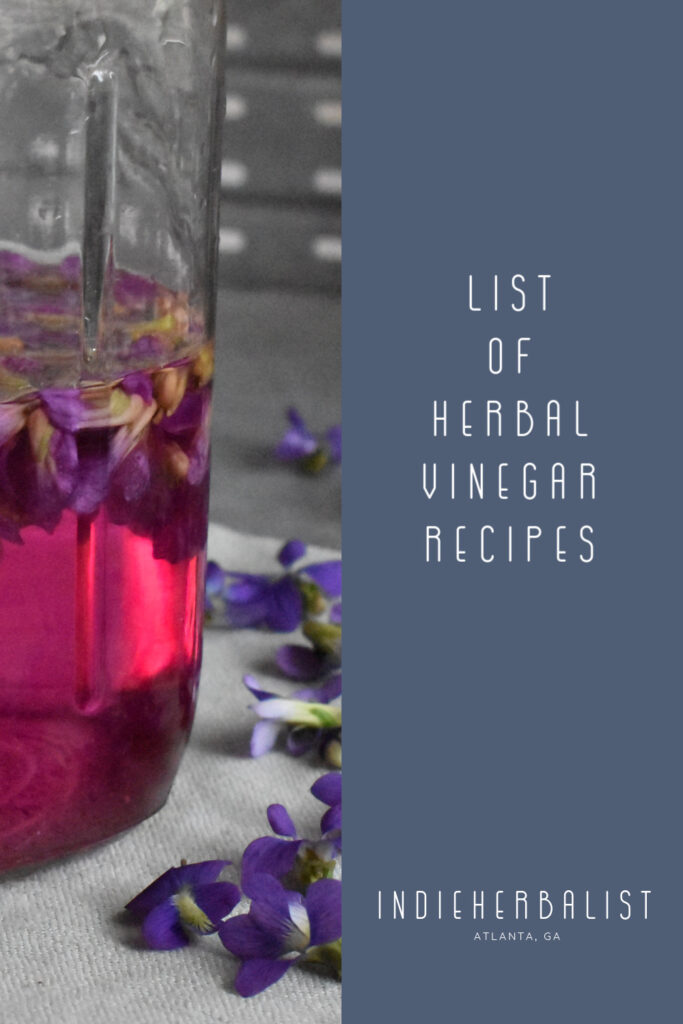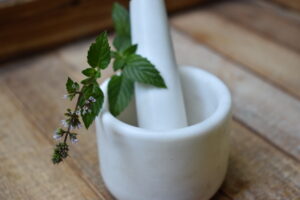Links contained in this post and elsewhere on my website may include affiliate links. When you make a purchase through these links, I earn a commission at no additional cost to you. I only link to products and services that I love - and that I think you will love, too!
Most people are familiar with the little bottles of alcohol-based herbal extracts available at health food stores. However, herbs can also be extracted in vinegar. Vinegar is a traditional carrier for herbs but has several excellent uses for the modern herbalist. It even has several points that trump alcohol extracts altogether. Herbal vinegar projects are also easy to make and use at home.
Making herbal vinegar projects at home
Making herbal vinegar is as simple as placing dried herbs in a jar with vinegar. The herbs soak in the vinegar for a week or two. Then the vinegar is strained and bottled. The Herbal Academy has a great article with more detailed instructions. (#affiliate)
Actually, even the vinegar is easy to make at home. Vinegar is just fruit juice and some good bacteria. When certain kinds of bacteria are added to the juice, fermentation happens! The juice becomes vinegar. The bacteria set up house as a gummy little disc in the juice. This is called a colony or “The Mother.” (I’m not making this up. Promise.) The mother is used to start the next batch of juice. . . and the next one. . . and the next one. Which makes vinegar a very sustainable choice for herbal recipes.
Ready to make some vinegar? Read on for the ways to use herbal vinegars and some recipes!

Using herbal vinegars
How do you use herbal vinegars? Why do I like to have them on hand? They are versatile! Depending on the herbs, they can:
- make topical liniments for sore muscles
- create soothing preparations for skin problems like sunburns and poison oak
- make extracts to support health challenges
- add zest to meals as a condiment
- create bitters blends to support healthy digestion
- blend sweet and sour into oxymels and shrubs (types of yummy vinegar-based drinks)
Vinegar is an inexpensive ingredient. It’s easy to experiment and come up with your own blends. I recommend taking a good herbal course if you are completely new to herbalism. Having guidance at first helps you safely explore the traditions of herbalism! Experimenting with herbs as flavoring for infused vinegars is one thing. However, creating herbal blends to support wellness takes a little more finesse.
Recipes to explore
Curious to find some herbal vinegar recipes? Here are some from other herbalists!
- Medicinal Vinegars and Oxymels over at The Nerdy Farm Wife
- Rosemary Gladstar’s original Fire Cider Recipe
- Fire Cider recipe by Moon and Spoon and Yum
- Nettle vinegar. A spring tonic from The Herbal Academy. (#affiliate)
- Bee Balm Oxymel with Rosalee de la Foret at Learning Herbs- I can’t tell you how much I want to try this recipe. I have a thing about bee balm- I absolutely adore this plant- and this looks amazing.
- The legendary Four Thieves Vinegar. Recipe and tutorial by The Herbal Academy. (#affiliate)
- Another Four Thieves Recipe at Nourished Kitchen
- A guide to making creative vinegar bitters at House and Garden
- A bitter vinegars recipe at Chalkboard Magazine
My recipe for violet vinegar
The picture above is my recipe for violet oxymel. Here’s the link to the recipe! It’s based on vinegar made from fresh violets. In the winter, I like to use it as a tonic. Violets are really wonderful as a gentle expectorant and alterative. In the summer, I use it after a run or workout. A spoonful mixed in water is a great thirst-quencher and cool-down drink.
Interested in more herbal options sans-alcohol? Check out my article on alcohol-free herbs for the home apothecary. If, on the other hand, herbal fermentation intrigues you, the Herbal Academy has a course you’ll love! The Craft of Herbal Fermentation will teach you how to make herbal kombucha, beers, mead, and even lacto-fermented pickles.

